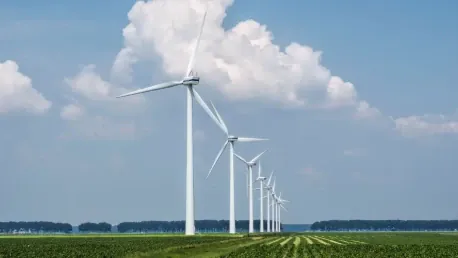One of the most contentious topics currently unfolding in rural Wales revolves around the battle between local residents and developers regarding the construction of wind farms, a situation gripped in tension and differing perspectives. At the heart of this dispute is the case of Nigel Dodman and Sandy Boulanger, who were offered double the value of their home and land to sell their property and remain silent about the development plans proposed by Bute Energy, the developers behind the Nant Mithil Energy Park.
Discovery of Wind Turbine Plans
Nigel Dodman and Sandy Boulanger first discovered plans for 31 wind turbines near their home, with ten turbines allegedly close enough to potentially “shake” their property. Initial assertions by Bute Energy claimed that no properties were within close proximity to the planned turbines. However, Mr. Dodman soon realized that the developers might have been unaware of his residence’s existence, raising immediate concerns about transparency and communication from the developers.
Compensation Offer and Refusal
Upon recognizing the oversight, Bute Energy offered a substantial compensation package—more than double the value of Dodman and Boulanger’s property, along with £10,000 annually until they secured full planning permission. This enticing deal was contingent upon the couple signing a non-disclosure agreement (NDA), which would have effectively silenced them regarding the development plans. However, Dodman and Boulanger refused the offer and chose to oppose the wind farm plans, voicing concerns over the potential impact on their “paradise,” the organic farm they had cultivated over a span of 25 years.
Location Concerns
The location’s suitability for the wind farm has also come under scrutiny. It has come to light that 23 of the 31 turbines at Nant Mithil would be placed outside the pre-assessed areas designated by the Welsh Government’s Future Wales 2040 plan for wind energy development. This revelation has bolstered the objections from locals who argue that the project’s site might not be appropriate for such a large-scale energy development, prompting questions about the thoroughness of site evaluations.
Broader Context and Community Division
The planned wind farms are part of a larger trend spreading across rural Wales, including other projects like Bryn Gilwern and Aberedw Energy Parks by Bute Energy and similar developers. Campaign groups, notably the Campaign for Protection of Rural Wales (CPRW), have been vigilantly monitoring the rapid increase in wind farm proposals and associated infrastructure like pylon highways. These groups argue the initiatives threaten to disrupt local communities and the inherent beauty of the Welsh landscape.
Environmental and Efficacy Concerns
Critics of large-scale onshore wind projects highlight both environmental and economic concerns, often citing the dormant Hendy Wind Farm turbines as a warning. They argue that these wind farms are neither environmentally nor economically justified. Points of contention include potential ecological impacts, operational inefficiencies, and the aesthetic alterations imposed on the landscape by numerous pylons and turbines.
Government and Developer Perspectives
In terms of official stance, UK Government Secretary of State for Energy Security and Net Zero, Ed Miliband, supports the rapid expansion and establishment of energy parks as critical measures to meet net-zero targets and reduce energy bills. Bute Energy insists that the benefits of wind energy—such as substantial carbon dioxide displacement and potential community benefits—far outweigh the disruptions that accompany the construction and operation of these turbines.
Long-term Impact and Future Plans
One of the most controversial topics unfolding in rural Wales is the ongoing conflict between local residents and developers over wind farm construction. This situation is marked by tension and clashing viewpoints. Central to this dispute is the story of Nigel Dodman and Sandy Boulanger, who were approached by Bute Energy, the developers behind the Nant Mithil Energy Park. They were offered twice the value of their home and land in exchange for selling their property and agreeing to remain silent about the company’s development plans. This offer sheds light on the broader struggle between rural communities and energy developers. Local residents are worried about the potential impact on the landscape, the environment, and their way of life, while developers emphasize the benefits of renewable energy and economic growth. This clash of interests has made the situation even more complicated and contentious. The Dodman and Boulanger case exemplifies the larger issue facing rural Wales as it grapples with balancing renewable energy development with preserving traditional community values and landscapes.









